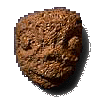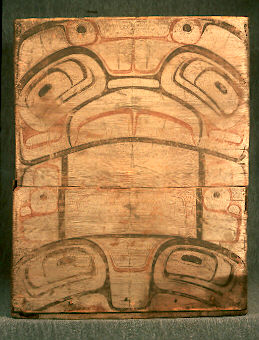


The people of the First Nations developed a unique, highly formal two dimensional art style during the thousands of years they have lived in coastal British Columbia, Canada. They decorated many objects of every day and ceremonial life. Their houses, canoes, paddles, poles, clothing, hats, drums, storage boxes, tools and utensils, all could be carved and/or painted in the unique Northwest Coast style.
The art style varied in different regions of the coast. These regional styles can often be distinguished by someone with a practiced eye. In all parts of the coast the art is based on a form line structure, with formal design elements and principles. This photo essay explores the two dimensional paintings and low relief carvings on boxes and chests made between about 1850 and 1910.Boxes and their contents were an integral part of the Northwest Coast potlatch. The potlatch was illegal in Canada from 1885 until the 1951 amendments to the ‘Indian Act’. After this time people were no longer prosecuted for potlatch activities. Further readings on the potlatch.
In the 1960’s NWC art again began to flourish, in silkscreen prints and other media. Currently, traditional two dimensional design is used in prints and is again used on boxes and chests. Some are made for commercial sale, while others are used in contemporary ceremonies.
| BACK TO THE SFU MUSEUM HOME PAGE | NEXT PAGE |